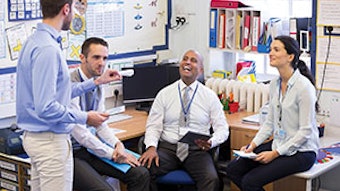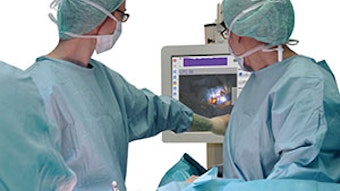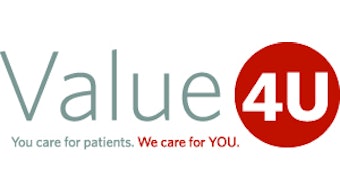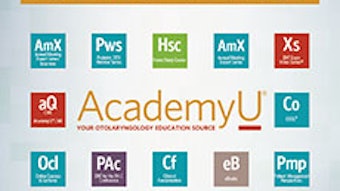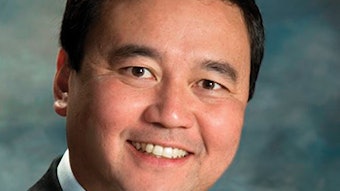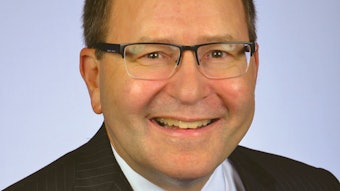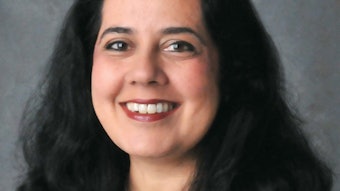Q & A with the Voice Committee
Want to offer your patients some timely advice on taking care of their voices for World Voice Day? Three AAO-HNS Voice Committee Members offer answers to questions you may hear in clinic
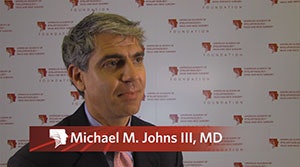 WORLD VOICE DAY 2016: See AAO-HNS Voice Committee Chair Michael Johns’ 2016 World Voice Day video promotion coming soon to www.entnet.org/worldvoiceday.
WORLD VOICE DAY 2016: See AAO-HNS Voice Committee Chair Michael Johns’ 2016 World Voice Day video promotion coming soon to www.entnet.org/worldvoiceday.Want to offer your patients some timely advice on taking care of their voices for World Voice Day? Three AAO-HNS Voice Committee Members offer answers to questions you may hear in clinic.
Q: If I have reflux and take my proton pump inhibitor, why am I still hoarse?
A: Salvatore J. Taliercio, MD, Sleepy Hollow, NY: The interplay between reflux and voice is complicated. Laryngopharyngeal reflux (LPR), or “silent” reflux, presents clinically with a persisting globus sensation and throat clearing. The local effects of acid in the larynx are inflammatory, and can directly affect voice quality. Throat clearing results in trauma to the edges of the vocal cords, which can result in inflammatory lesions called granulomas, which then perpetuate the cycle of globus and urge to throat clear. Despite appropriate dietary changes, and adherence to proton pump inhibitors (PPI), patients with LPR can also present with subtle irregularities of the vibratory margins of the vocal cords. The changes are demonstrated dynamically through stroboscopy, which reveals glottic insufficiency that would explain poor voice quality.
A: Thomas L. Carroll, MD, Boston, MA: The symptoms of glottic insufficiency can closely mimic those of LPR. Throat clearing and mucus sensation in the absence of globus sensation has been demonstrated in patients with vocal fold atrophy when LPR is not present based on impedance reflux testing. Considering a temporary diagnostic trial augmentation in this population before a long-term, high dose PPI trial may be worthwhile if the patient’s overall clinical history and exam does not solely suggest reflux changes but rather an elliptical or short phase closure pattern on stroboscopy. Other clues to consider glottic insufficiency rather than reflux as the etiology are supraglottic hyperfunction where one or both false vocal folds are covering the true vocal folds during sustained phonation. The hyperfunction is unlikely the primary problem but rather evidence of secondary compensation for underlying loss of air from the glottis.
Q: Will voice therapy fix my vocal cord nodules?
A: Dr. Taliercio: Vocal cord nodules, or more broadly defined as vocal cord mid-membranous phonotraumatic lesions, are a common pathology for those with significant voice demands. Often those with nodules do not seek treatment, as the patient has no limitations, despite a change in voice quality. For those with limitations, voice therapy serves as an instrument to improve vocal efficiency, to maximize the quality and production of voice given the patient’s current laryngeal architecture. Therapy focuses on technique and awareness of voice use, and can even improve breath support. Ultimately, therapy may help to improve the appearance of nodules, but the primary goal is to reduce the patient’s voice limitations and vocal fatigue, in a supportive fashion, that does not assume the risks of surgical intervention.
Q: What’s new in the treatment of vocal fold paralysis?
A: Julina Ongkasuwan, MD, Houston, TX: Vocal fold medialization is one of the most rewarding procedures in otolaryngology. Injection laryngoplasty can now be done, transcervically or transorally in the office or at the bedside with a flexible nasolaryngoscope and video tower. The workhorse for long-term medialization remains type 1 thyroplasty; however, laryngeal reinnervation is experiencing resurgence in popularity.
Q: What can patients do to explore their vocal health?
A: Dr. Ongkasuwan: Like many things in life, people do not think about their vocal health until there is problem; however, an ounce of prevention can go a long way. Resources exist through the Academy to learn about how the voice works. Especially for individuals for whom their voice is their livelihood, integrating vocal warm ups, using amplification, and incorporating opportunities to rest the voice can help protect the voice. In addition, vocal coaches are not just for singers, they can help people learn to project their voice in an efficient and atraumatic manner.
Q: What is new in the treatment of chronic epithelial lesions of the true vocal folds?
A: Dr. Carroll: Office and operative treatment of recurrent respiratory papilloma (RRP) and recurrent leukoplakia, including hyperkeratosis and dysplasia, has historically meant multiple trips to the operating room, voice change due to scarring of the lamina propria and progression of disease as patients are observed until “it is time to go back for another procedure”. Office based KTP laser treatments can offer patients with RRP and other recurrent epithelial lesions maintenance procedures that do not require general anesthesia and loss of time from work. It is often necessary to start with an operative microsuspension laryngoscopy for diagnostic biopsies and complete lesion excision. After this, office-based surveillance and intermittent KTP laser ablation can maintain voice while keeping disease at bay. Patients prefer the lack of significant down time and the avoidance of a general anesthetic.
Q: What remains a difficult pathology to treat in the disordered voice?
A: Dr. Carroll: Scarring of the lamina propria of the true vocal fold remains one of the most difficult laryngeal pathologies to treat. Vocal fold scar is variable in presentation and severity. Scar formation in the glottis may be an active inflammatory process or more of a chronic result of an initial insult that leads to stiffness of the mucosal wave. Despite normal vocal fold motion, most patients with severe scar present with a harsh, strained, and effortful voice due to glottic insufficiency from inappropriate air loss and lack of normal vibratory characteristics. Some patients achieve a better functional outcome through voice therapy, however adjunct treatments are often necessary to achieve the patient’s goals. Serial steroid injections into the scarred area of the vocal fold can soften the scar and modulate what may be an ongoing active inflammatory process. Surgery to excise the scar can be attempted but results are not always predictable. Placement of fascia or fat into the subepithelial plane of the true vocal fold has been demonstrated effective although also not completely predictable or longstanding. One consideration for otolaryngologists who face these difficult cases is to first consider a diagnostic trial vocal fold augmentation into the deep aspect of the vocal fold. Global injection augmentation does not intend to address the scar itself; rather it improves the glottic insufficiency and overall patient function. Research in the area of lamina propria replacement and modulation is ongoing.


